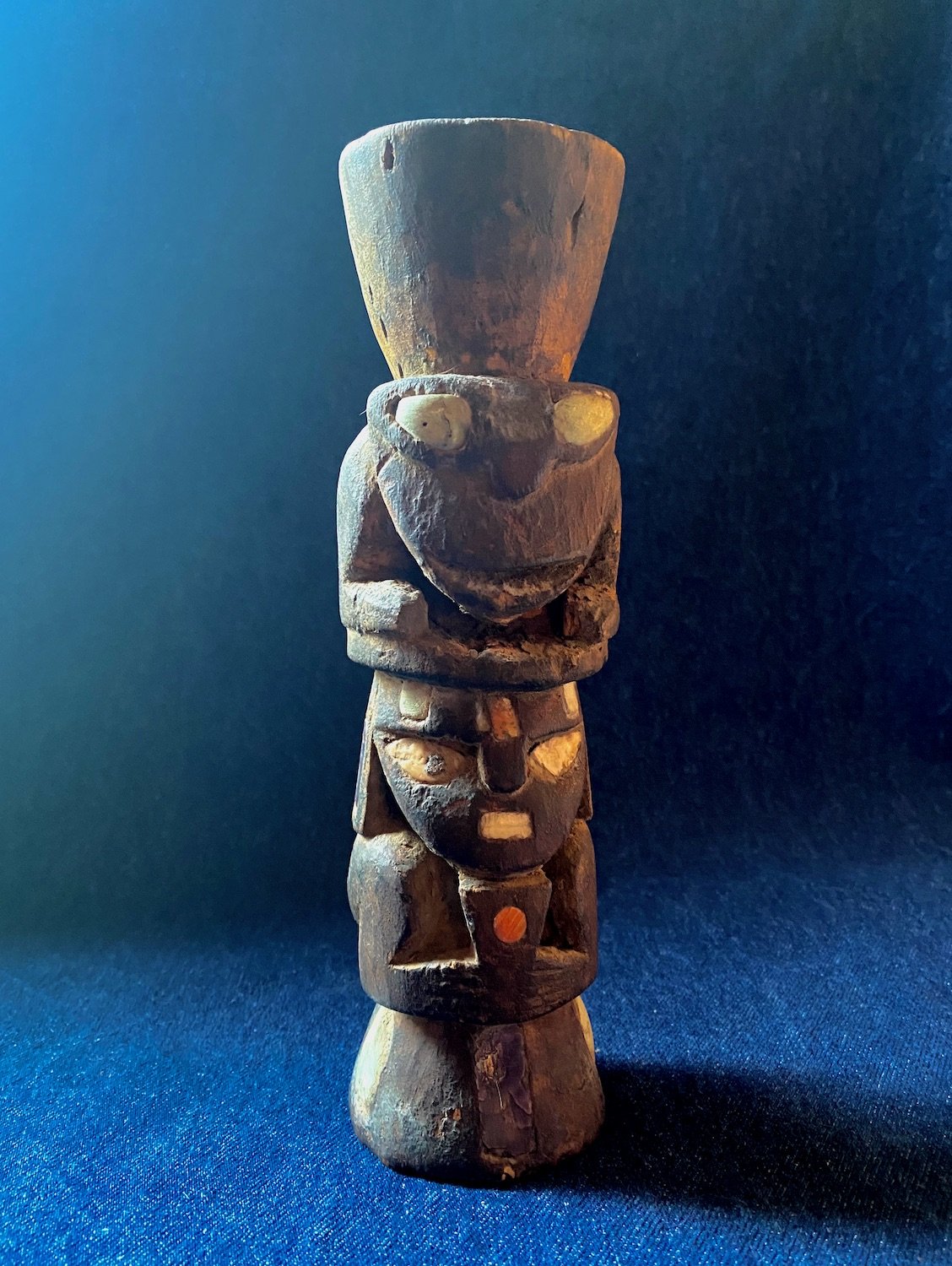 Image 1 of 8
Image 1 of 8

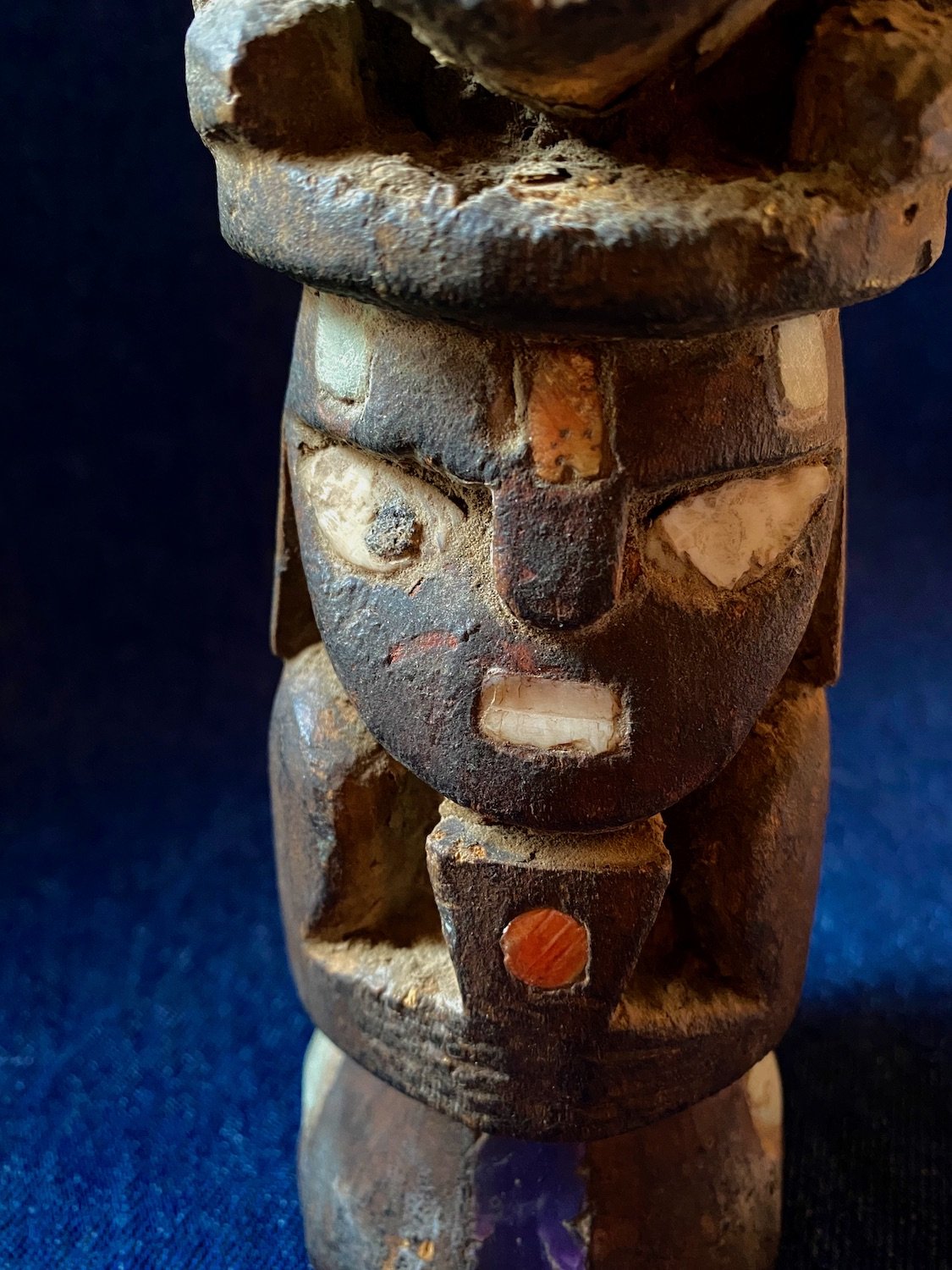 Image 2 of 8
Image 2 of 8

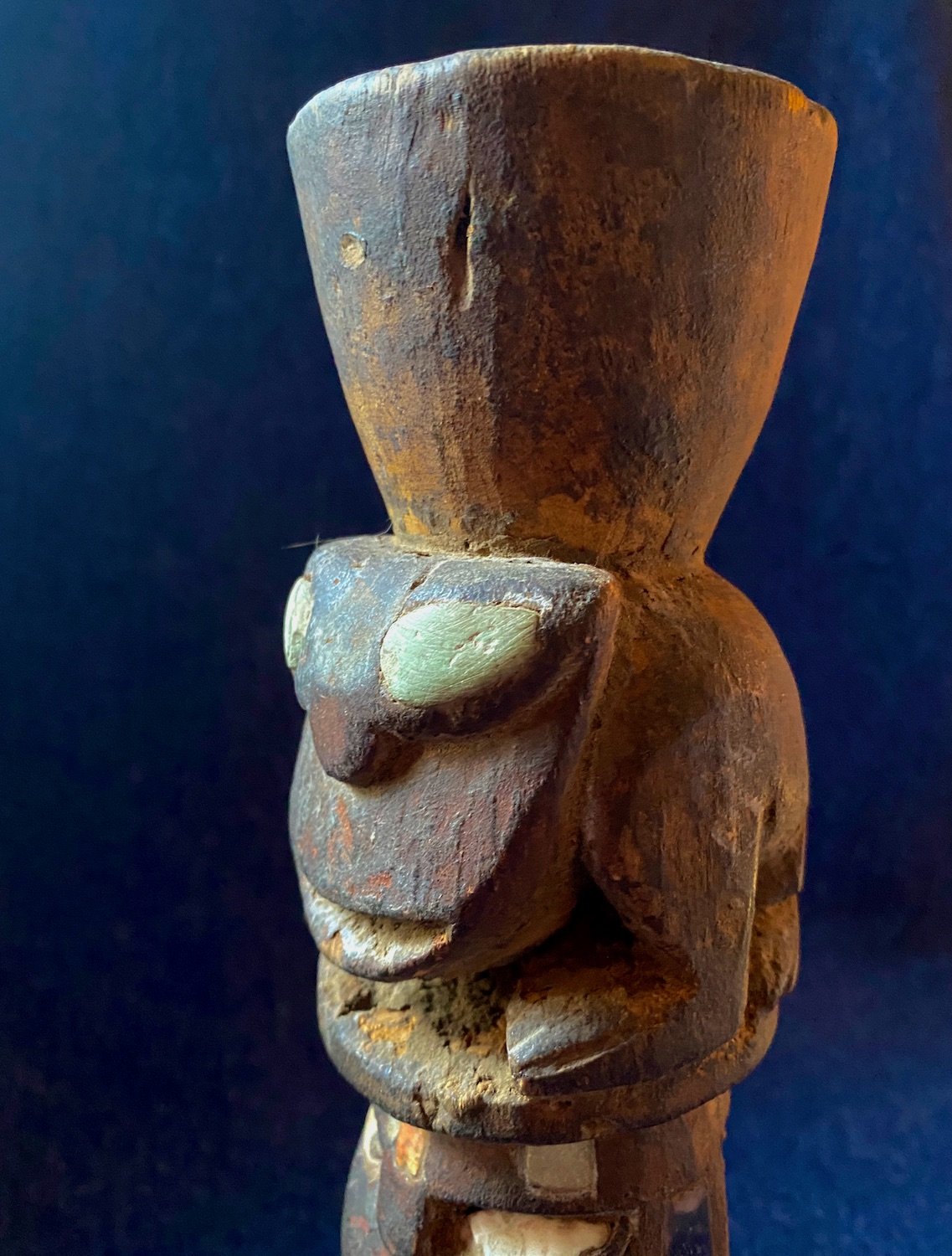 Image 3 of 8
Image 3 of 8

 Image 4 of 8
Image 4 of 8

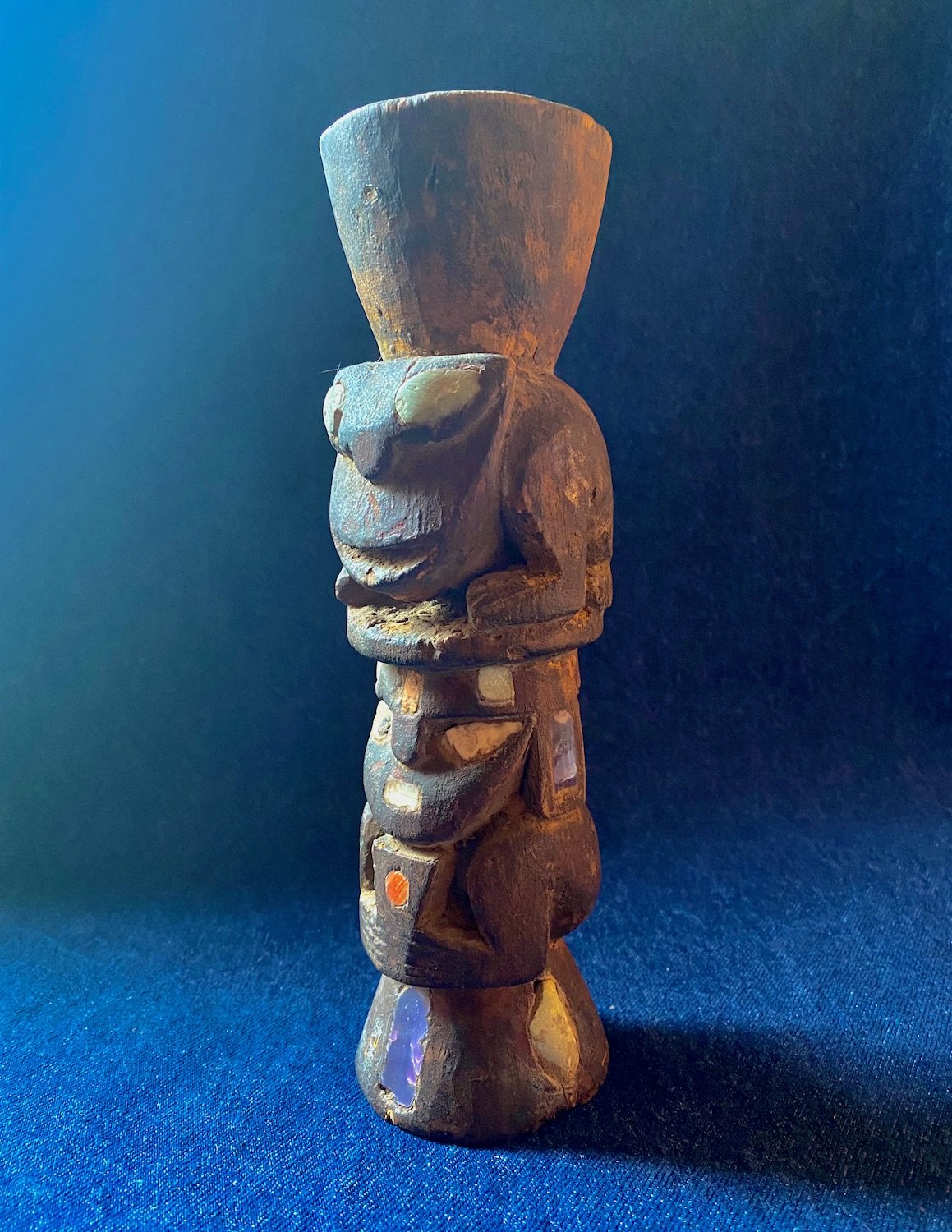 Image 5 of 8
Image 5 of 8

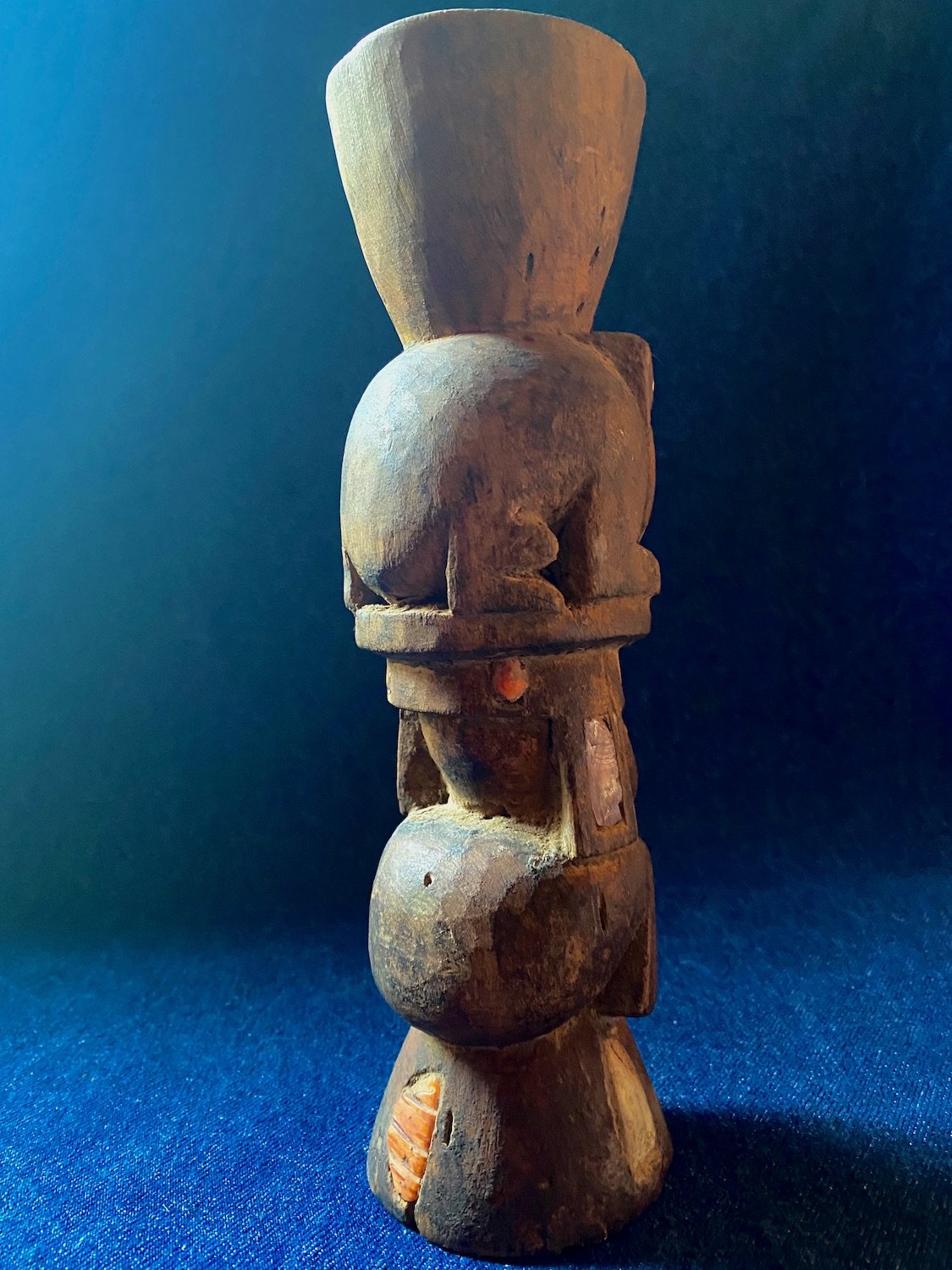 Image 6 of 8
Image 6 of 8

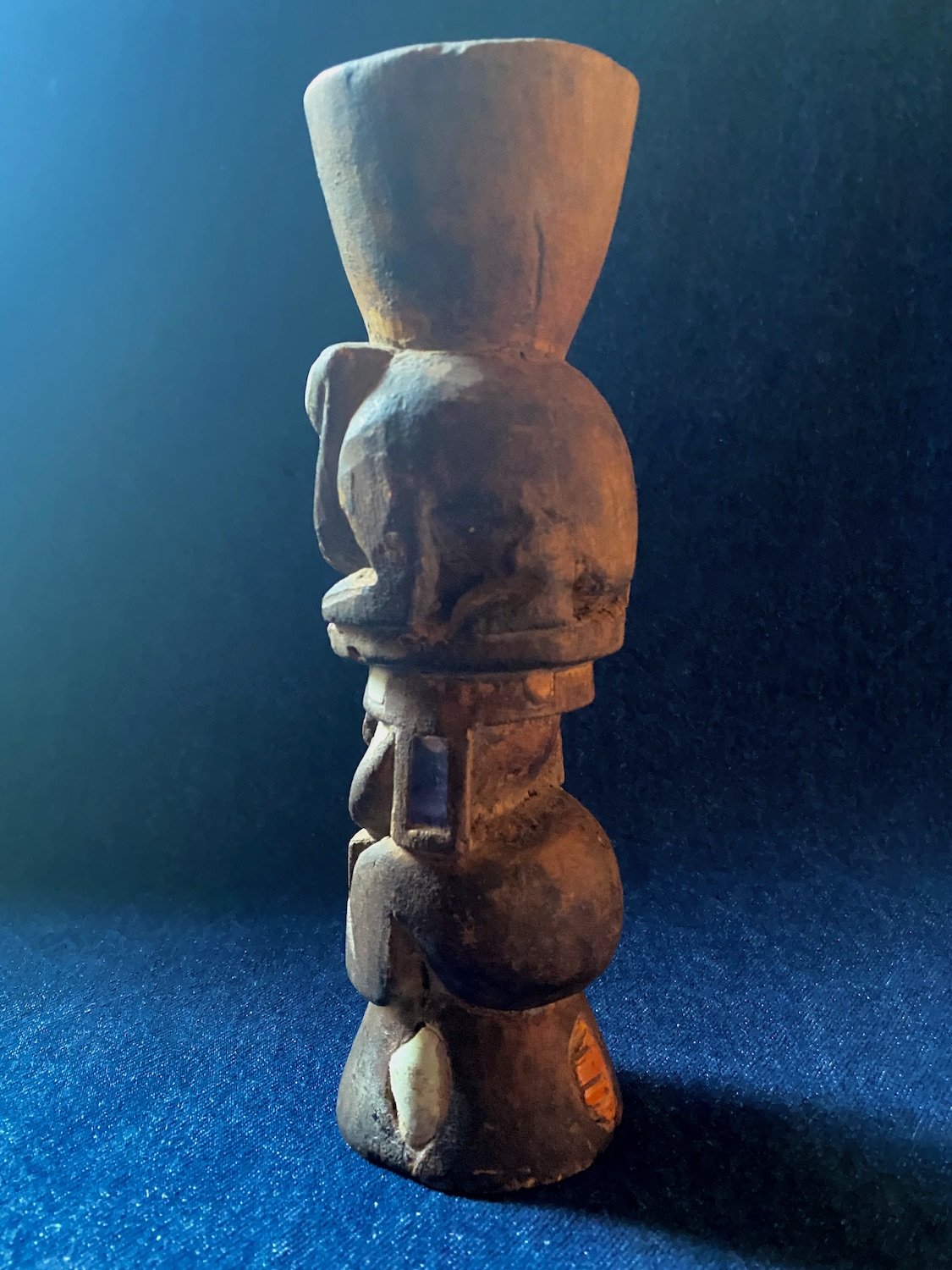 Image 7 of 8
Image 7 of 8

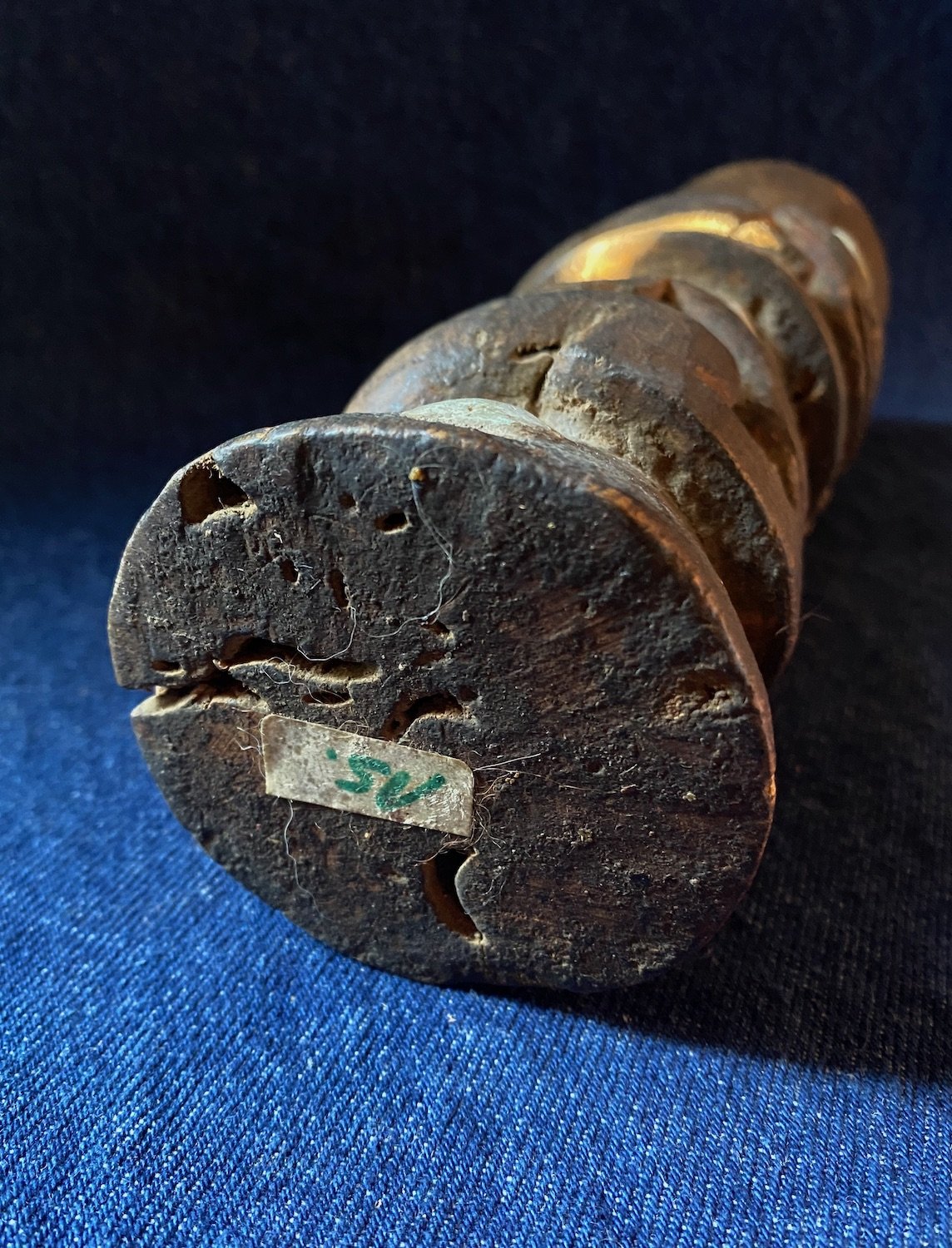 Image 8 of 8
Image 8 of 8









Pre-Columbian Wari Goblet
An extraordinary figural kero (ceremonial goblet) from the Wari (Huari) Culture, Peru, ca. 500 to 1000 CE. The design features a human figure (holding its own kero), surmounted by a zoomorphic figure (probably a frog, harbinger of rain) all topped by a shot-glass-sized cup. One can only imagine what kind of potion this vessel once held! Inlaid with coral-pink Spondylus shell, violet nacre, and a light-blue-green stone which may be turquoise or chrysocolla. Excellent condition, with some ancient insect borings, mineral encrustation, and general wear.
The Wari rose to prominence during the decline of the Moche. They are credited with introducing the techniques of terrace agriculture to the south-central Andes and coastal area of modern-day Peru, greatly increasing the amount of arable land. The Wari were a cosmopolitan people, with extensive trade and cultural contacts, especially with the Tiwanaku (Tiahuanaco). A period of extended drought seems to have sent the culture into decline, eventually to be replaced by the Chimu.
10” x 3”
An extraordinary figural kero (ceremonial goblet) from the Wari (Huari) Culture, Peru, ca. 500 to 1000 CE. The design features a human figure (holding its own kero), surmounted by a zoomorphic figure (probably a frog, harbinger of rain) all topped by a shot-glass-sized cup. One can only imagine what kind of potion this vessel once held! Inlaid with coral-pink Spondylus shell, violet nacre, and a light-blue-green stone which may be turquoise or chrysocolla. Excellent condition, with some ancient insect borings, mineral encrustation, and general wear.
The Wari rose to prominence during the decline of the Moche. They are credited with introducing the techniques of terrace agriculture to the south-central Andes and coastal area of modern-day Peru, greatly increasing the amount of arable land. The Wari were a cosmopolitan people, with extensive trade and cultural contacts, especially with the Tiwanaku (Tiahuanaco). A period of extended drought seems to have sent the culture into decline, eventually to be replaced by the Chimu.
10” x 3”